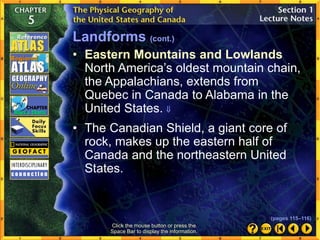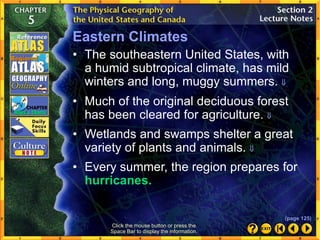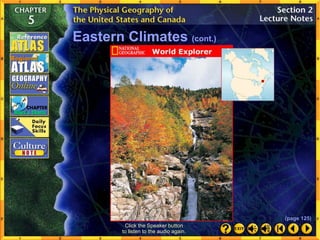The document is a presentation about the geography of North America that includes sections on landforms, climate, and natural resources of the United States and Canada. It notes that the two countries have similar landforms shaped by geological processes, including high mountains in the west, plains in the center, and older mountains and coastal lowlands in the east. It also discusses the region's variety of climates influenced by factors like latitude, wind, oceans, rainfall, and elevation.






















































































